|
Diseases of Poultry
By Ivan Dinev, DVM, PhD
|
VITAMIN E DEFICIENCY

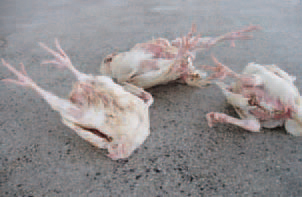
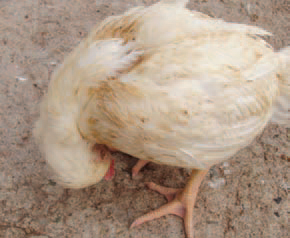
435.436.437.The deficiency of vitamin E in poultry is manifested in three different forms: encephalomalacia, muscular dystrophy and exudative diathesis. Each of them is usually encountered independently, although sometimes they occur at a time. Encephalomalacia (crazy chick disease). The signs are associated to the central nervous system lesions. They include ataxia, disequilibrium, falling on the back, frequent movements with the wings, strongly stretched legs (clonic spasms) and twisting of the head (435 and 436). Rarely, torticolis or opisthotonus (437) could be observed.
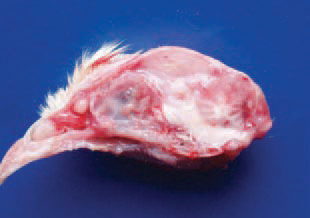
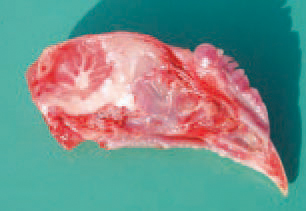
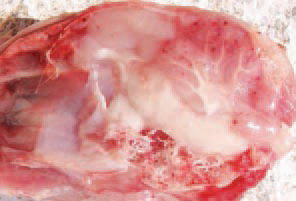
438.439.440.Encephalomalacia is usually observed at the age of 15-30 days but could be also present as early as after the 7th day, as well as after the 56th day of life. Pathoanatomically, oedema, haemorrhages and colliquative necroses are detected in the cerebellum. In the majority of cases, the haemorrhages vary from hardly perceptible to petechial.
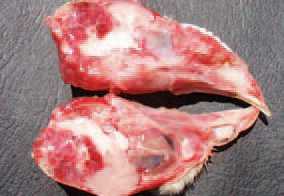
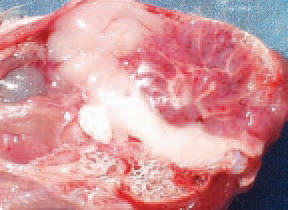

441.442.443.It is possible, although more rarely, to observe massive haemorrhages and sometimes, haematomas in the cerebellum. As an exception, brain lesions could also be present. The vitamin E deficiency is usually manifested in young birds -chickens, turkey poults, ducklings, pheasant poults etc. Most outbreaks are related to high levels of polyunsaturated fat in the diet (meat and bone meal, fish meal etc.) or rancid fat content.
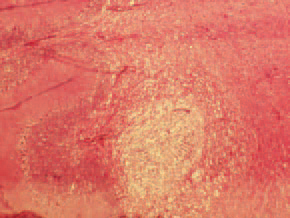


444.445.446.Histologically, colliquative necroses in the white brain substance (444), haemorrhages (445) and multiple thrombosed blood vessels (446) in the cerebellum are detected. Vitamin E and the selenium-containing enzyme glutathione peroxidase preserve the cellular membrane from being destructed by peroxides and other oxidants, produced as metabolic by-products. Peroxides are derivatives of polyunsaturated fatty acids in forages.
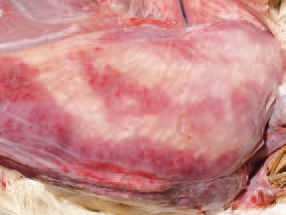
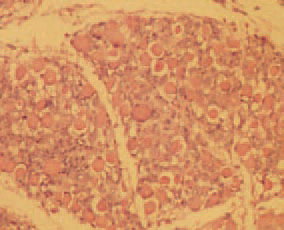
447.448. Muscular dystrophy. The signs are usually unapparent, but locomotor problems could occur. The pectoral and thigh muscles are most commonly affected, and in them, white or yellowish muscle fibres are found, responsible for the striated appearance of skeletal muscles (447), due to Zenker's necrosis (448).
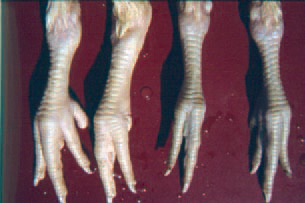
449.Exudative diathesis. Gelatinous subcutaneous oedemas are discovered in the ventral body parts: breast, abdomen, mandibular space. The skin of legs is often cyanotic. The diagnosis is based upon the typical clinical signs and the lesions. The results of the histological examination have a particular value for confirmation of the diagnosis, especially of encephalomalacia and muscular dystrophy. Control -utilization of stabilized fats in forages, avoiding the prolonged storage of ready forages for more than 4 weeks. The vitamin E content should be 10 000 lU/tonne and that of selenium - 0.25 ppm.






